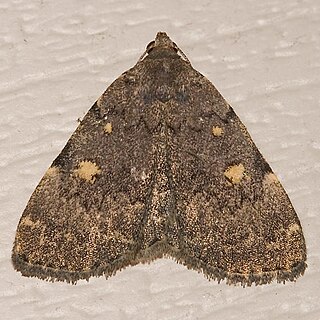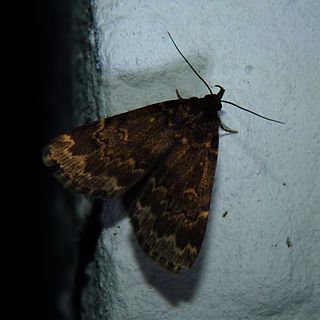
Gopherus is a genus of fossorial tortoises commonly referred to as gopher tortoises. The gopher tortoise is grouped with land tortoises that originated 60 million years ago, in North America. A genetic study has shown that their closest relatives are in the Asian genus Manouria. The gopher tortoises live in the southern United States from California's Mojave Desert across to Florida, and in parts of northern Mexico. Gopher tortoises are so named because of some species' habit of digging large, deep burrows. Most notably, Gopherus polyphemus digs burrows which can be up to 40 feet (12 m) in length and 10 feet (3.0 m) in depth. These burrows are used by a variety of other species, including mammals, other reptiles, amphibians, and birds. Gopher tortoises are 20–50 cm (7.9–19.7 in) in length, depending on the species. All six species are found in xeric habitats. Numerous extinct species are known, the oldest dating to the Priabonian stage of the Late Eocene of the United States.

The gopher tortoise is a species of tortoise in the family Testudinidae. The species is native to the southeastern United States. The gopher tortoise is seen as a keystone species because it digs burrows that provide shelter for at least 360 other animal species. G. polyphemus is threatened by predation and habitat destruction. Habitat degradation is the primary reason that the gopher tortoise is listed as vulnerable on the IUCN Red List, but they are considered threatened in some states while they are endangered in others.

Agrotis is a genus of moths of the family Noctuidae. The genus was erected by Ferdinand Ochsenheimer in 1816. A number of the species of this genus are extinct.

Hypena is a genus of moths in the family Erebidae. It was first described by Franz von Paula Schrank in 1802. These non-migratory moths overwinter as pupae and almost never estivate as adults.

Idia is a genus of litter moths of the family Erebidae first described by Jacob Hübner in 1813.

Idia aemula, the common idia, powdered snout or waved tabby, is a litter moth of the family Erebidae. The species was first described by Jacob Hübner in 1813. It is found from Canada south to Florida and Texas. It has been reported in the Palearctic.

Idia lubricalis, the glossy black idia, is a litter moth of the family Erebidae. The species was first described by Carl Geyer in 1832. It is found from Canada south to Florida and Texas in deciduous forests.

Idia occidentalis is a species of litter moth of the family Erebidae first described by Smith in 1884. It is found in North America from southern Alberta and British Columbia, south to Colorado, Arizona and California.

Idia americalis, the American idia or American snout, is a litter moth of the family Erebidae. The species was first described by Achille Guenée in 1854. It is commonly found in moist forests in North America, ranging from southern Canada to Florida and Texas. It is nocturnal and can be lured by sugar baits and light traps.

Idia diminuendis, the orange-spotted idia, is a litter moth of the family Erebidae. The species was first described by William Barnes and James Halliday McDunnough in 1918. It is found in North America from Wisconsin to Nova Scotia, south to Florida and Texas.

Idia forbesii, or Forbes' idia moth, is a litter moth of the family Erebidae. The species was first described by George Hazen French in 1894. It is found in North America from Wisconsin to Quebec, south to Florida and Texas.
Idia julia, or Julia's idia, is a litter moth of the family Erebidae. The species was first described by William Barnes and James Halliday McDunnough in 1918. It is found from southern Canada south to Georgia and Texas.

Idia rotundalis, the chocolate idia or rotund idia moth, is a litter moth of the family Erebidae. The species was first described by Francis Walker in 1866. It is found from southern Canada to Florida and Texas.
Idia scobialis, the smoky idia, is a litter moth of the family Erebidae. The species was first described by Augustus Radcliffe Grote in 1880. It is found in North America from Michigan, southern Quebec and Maine, south to Florida and at least Kentucky.
Idia denticulalis, the toothed idia, is a litter moth of the family Erebidae. The species was first described by Leon F. Harvey in 1875. It is found in Quebec, Canada, and the US from Wisconsin to New England, south to Alabama and Texas.
Idia laurentii, the laurentine idia, is a litter moth of the family Erebidae. The species was first described by J. B. Smith in 1893. It is found in the US from central New York, south to the mountains of North Carolina.
Idia majoralis, the greater idia, is a litter moth of the family Erebidae. The species was first described by J. B. Smith in 1895. It is found in Canada from Ontario and Quebec, south into the United States, where it has been recorded from Illinois, Wisconsin and Missouri.
Idia terrebralis is a species of litter moth of the family Erebidae first described by William Barnes and James Halliday McDunnough in 1912. It is found in North America, including Illinois.
Idia immaculalis, the immaculate idia, is a litter moth of the family Erebidae. The species was first described by George Duryea Hulst in 1886. It is found in North America from at least California, north and east across Montana to southern Alberta and Saskatchewan.
Eutrichota gopheri, the gopher tortoise burrow fly, is a species of root-maggot flies in the family Anthomyiidae.











